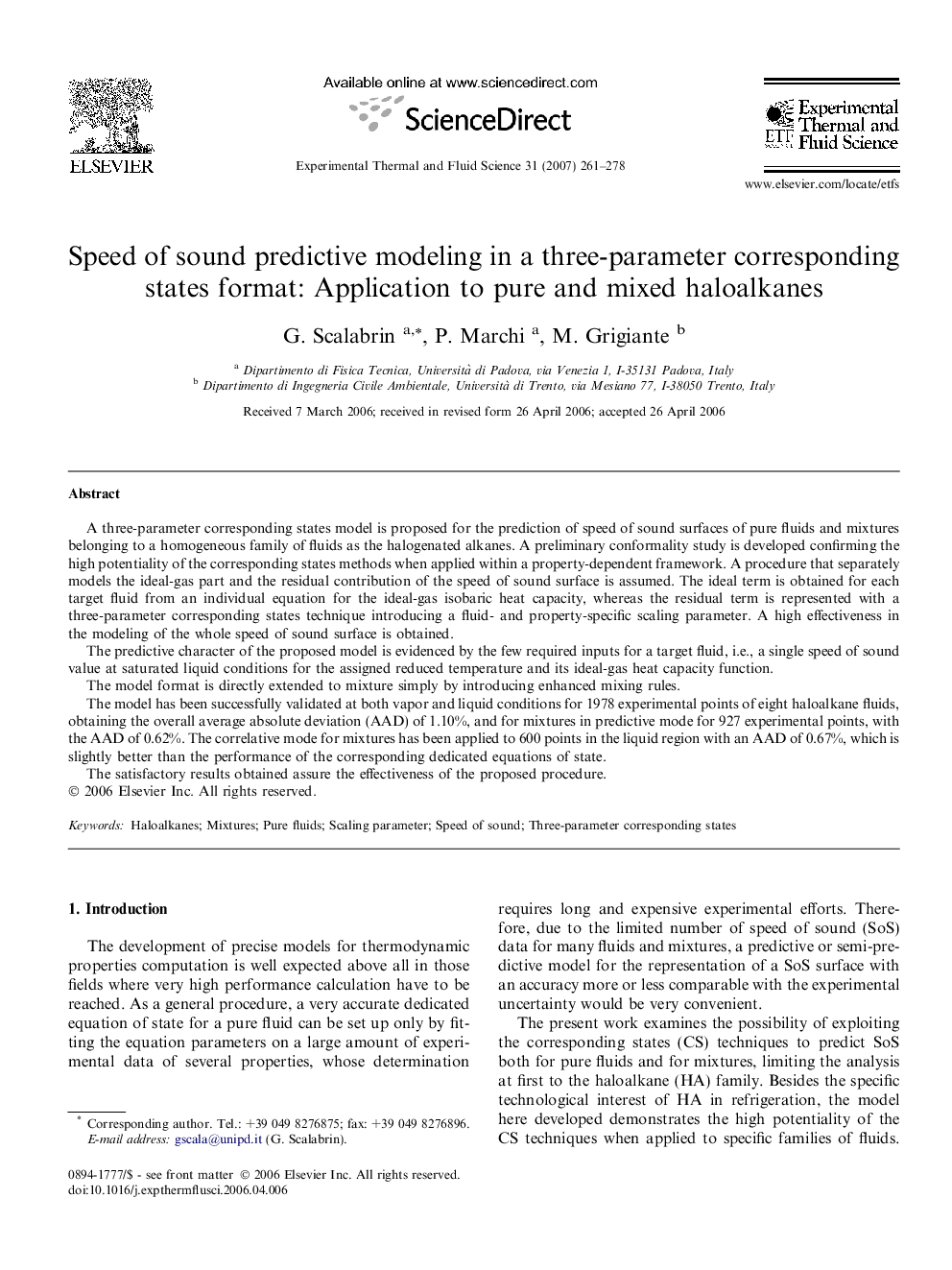| Article ID | Journal | Published Year | Pages | File Type |
|---|---|---|---|---|
| 652778 | Experimental Thermal and Fluid Science | 2007 | 18 Pages |
A three-parameter corresponding states model is proposed for the prediction of speed of sound surfaces of pure fluids and mixtures belonging to a homogeneous family of fluids as the halogenated alkanes. A preliminary conformality study is developed confirming the high potentiality of the corresponding states methods when applied within a property-dependent framework. A procedure that separately models the ideal-gas part and the residual contribution of the speed of sound surface is assumed. The ideal term is obtained for each target fluid from an individual equation for the ideal-gas isobaric heat capacity, whereas the residual term is represented with a three-parameter corresponding states technique introducing a fluid- and property-specific scaling parameter. A high effectiveness in the modeling of the whole speed of sound surface is obtained.The predictive character of the proposed model is evidenced by the few required inputs for a target fluid, i.e., a single speed of sound value at saturated liquid conditions for the assigned reduced temperature and its ideal-gas heat capacity function.The model format is directly extended to mixture simply by introducing enhanced mixing rules.The model has been successfully validated at both vapor and liquid conditions for 1978 experimental points of eight haloalkane fluids, obtaining the overall average absolute deviation (AAD) of 1.10%, and for mixtures in predictive mode for 927 experimental points, with the AAD of 0.62%. The correlative mode for mixtures has been applied to 600 points in the liquid region with an AAD of 0.67%, which is slightly better than the performance of the corresponding dedicated equations of state.The satisfactory results obtained assure the effectiveness of the proposed procedure.
